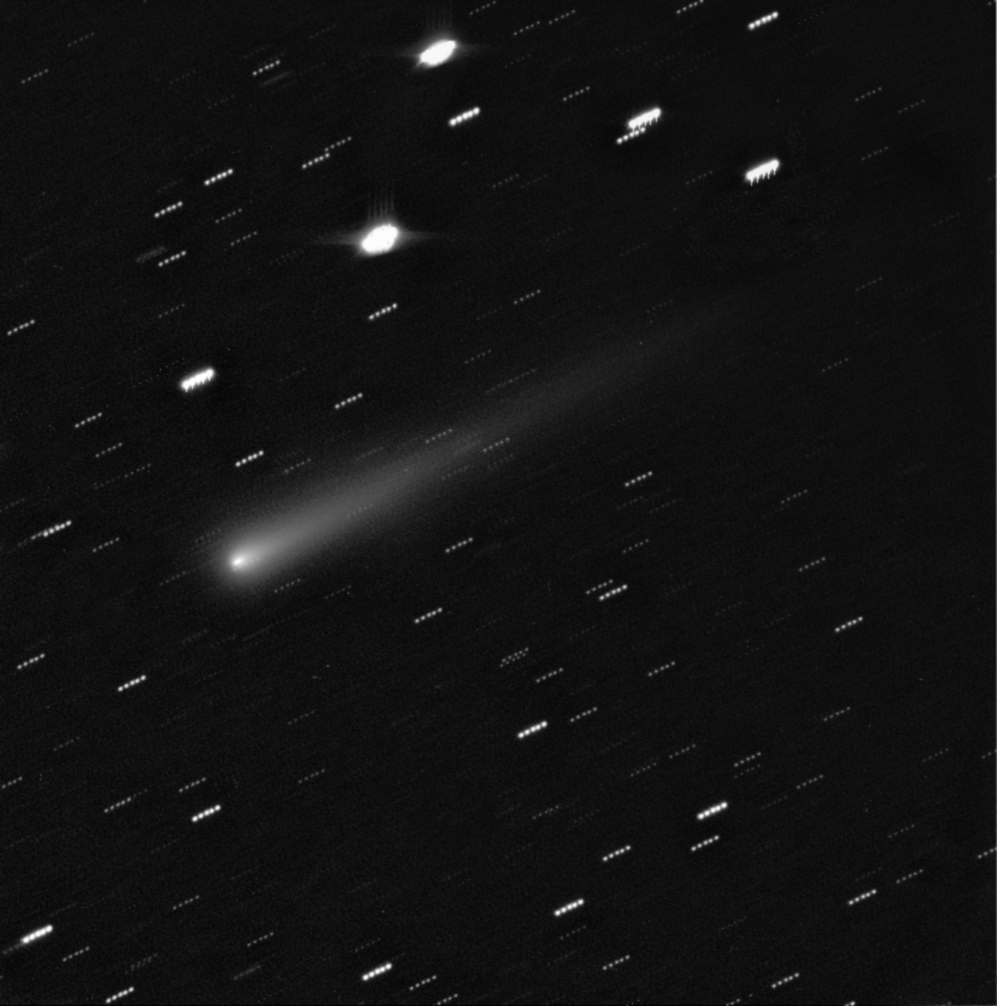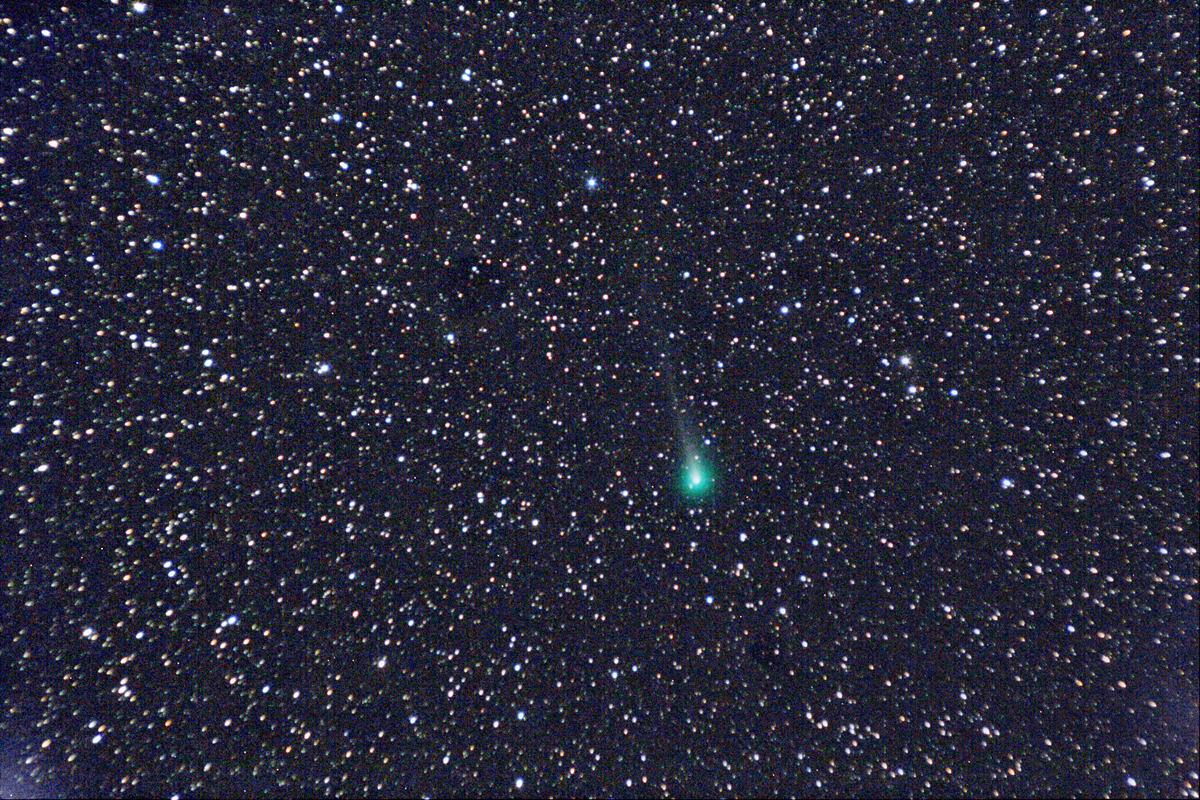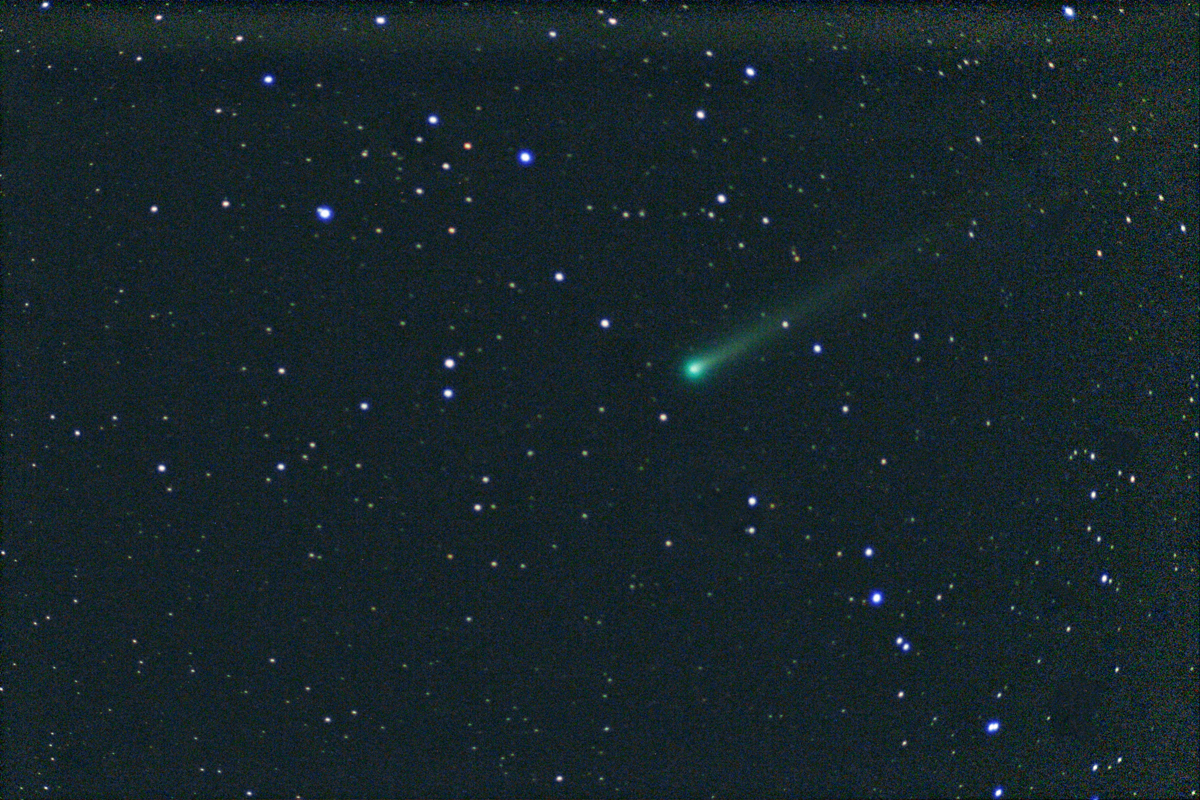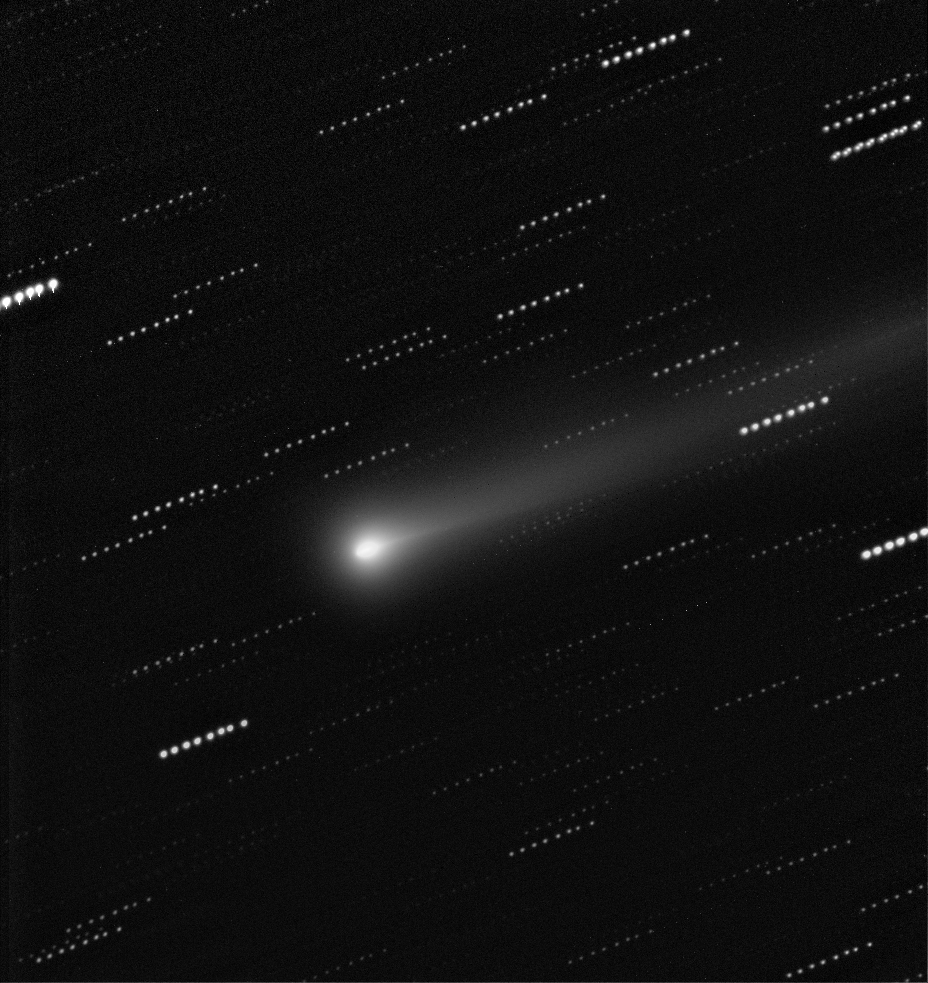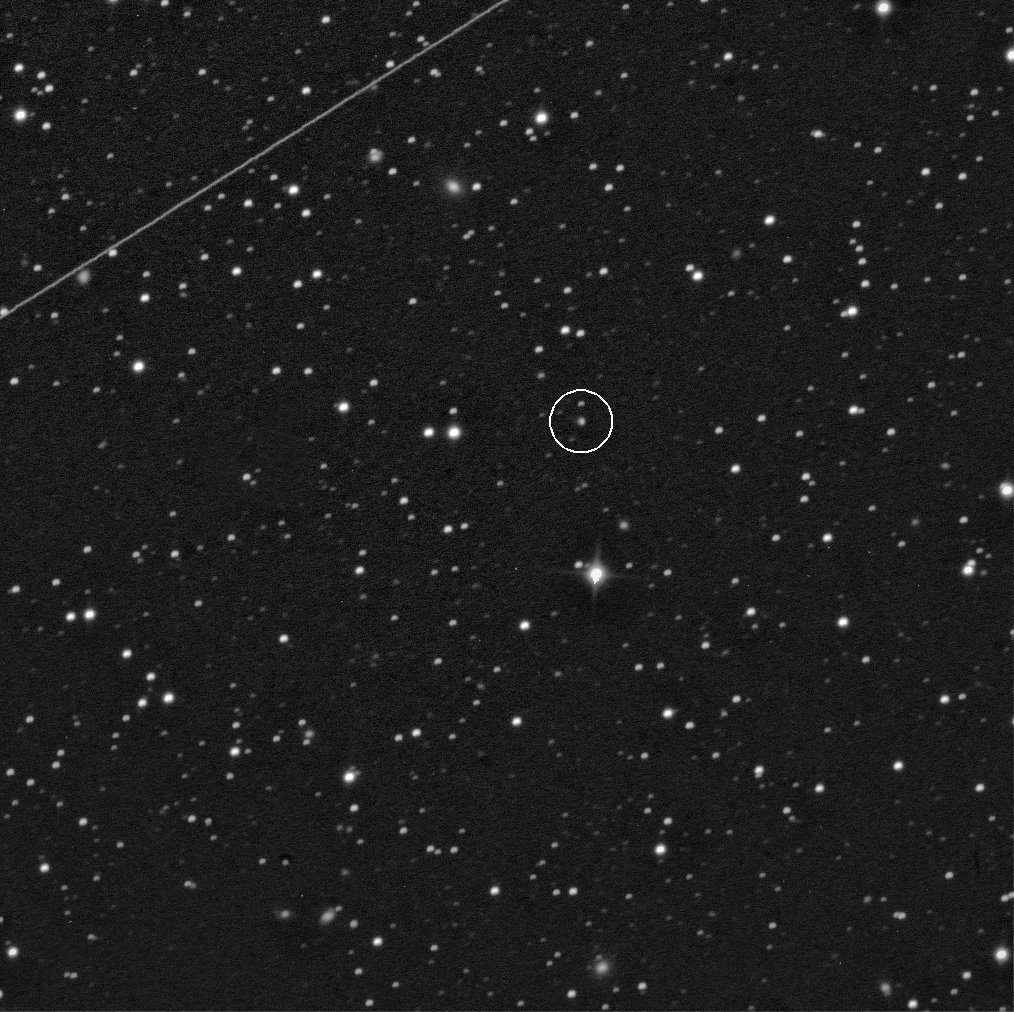
Comet 2012 S1 ISON. 21 December, 2012.
Combination of 5, 3 minute images unfiltered.
SBIG STL-1001E CCD. 20" f/6.8 cassegrain at prime focus.
Comet 2012 S1 ISON has been very much hyped in the media since its discovery, as the "comet of the century", and with forecasts of it reaching as much as magnitude -6. Unfortunately, it remains to be seen what the final result will be. The problem is that comets approaching the Sun for the first time tend to be anomalously bright at large heliocentric distances as a CO2 layer boils off, and then settle down to a more "normal" brightness as they get closer in to the Sun. (Remember comet Kohoutek from 1973!) At the time of writing (July 2013) the comet is in conjunction with the Sun. Before the comet disappeared behind the Sun the brightness was not increasing as fast as expected, and it remains to be seen what will happen when it reappears.
Regardless of what happens, the comet should still be a fine sight as it will make a close apporach the Earth shortly after perihelion, possibly being at about magnitude 2 during December 2013. The northern hemisphere is especially favoured, with the comet being located in the far northern sky when at its best.

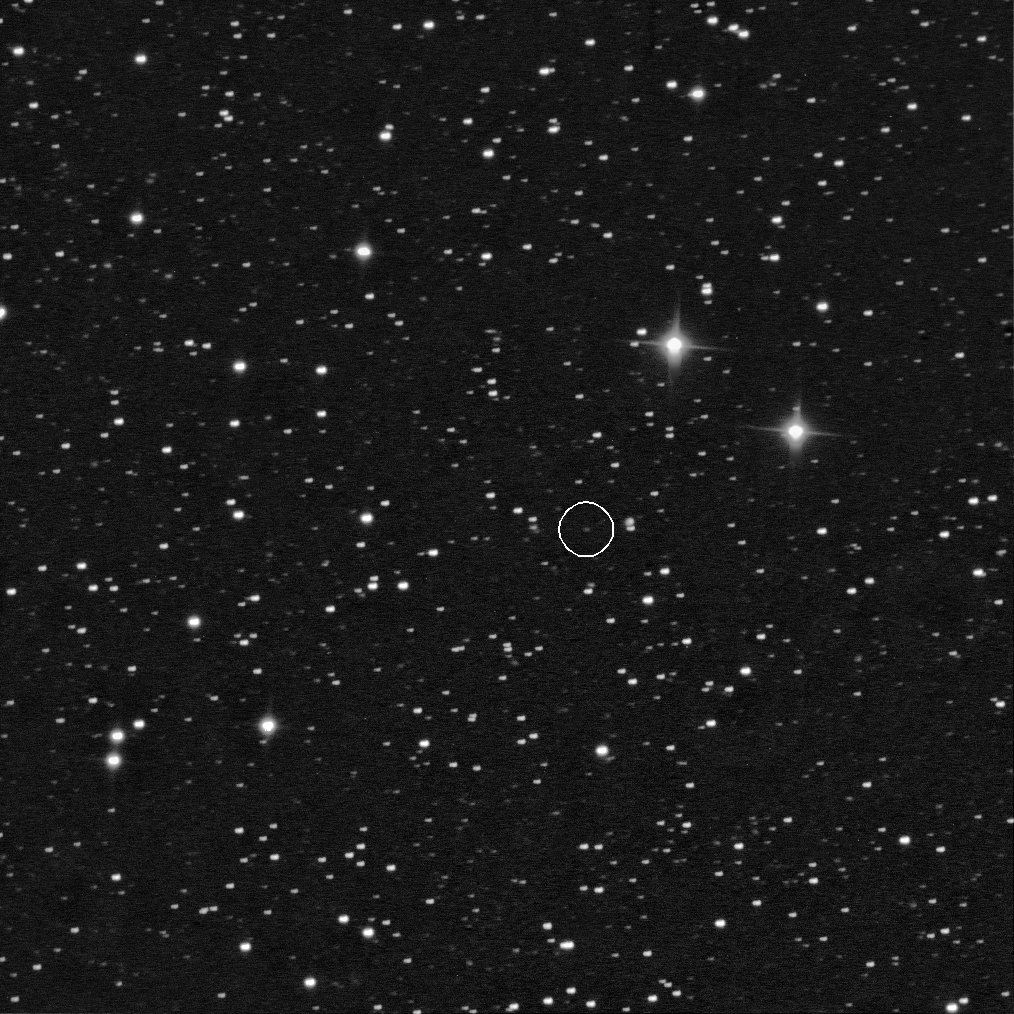
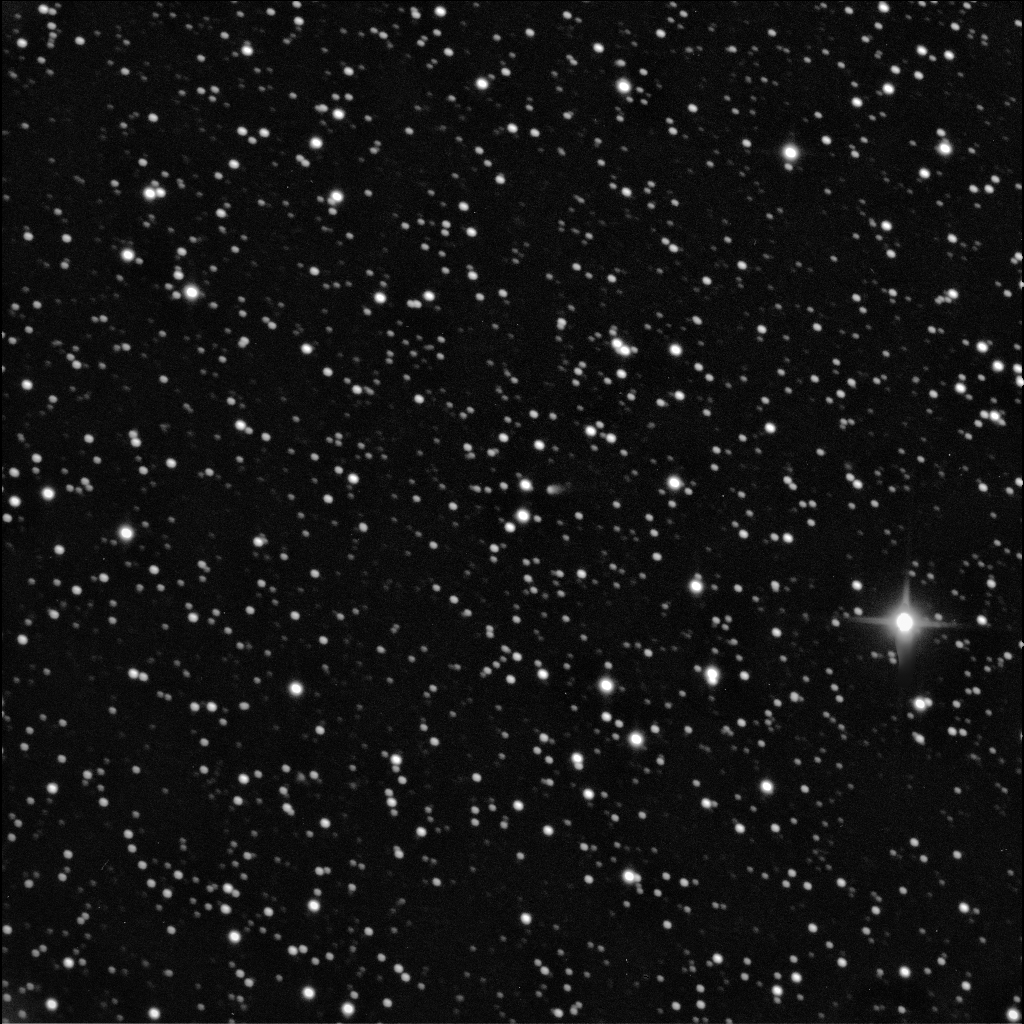

On this night the comet was almost obscured by the bright star near the centre.
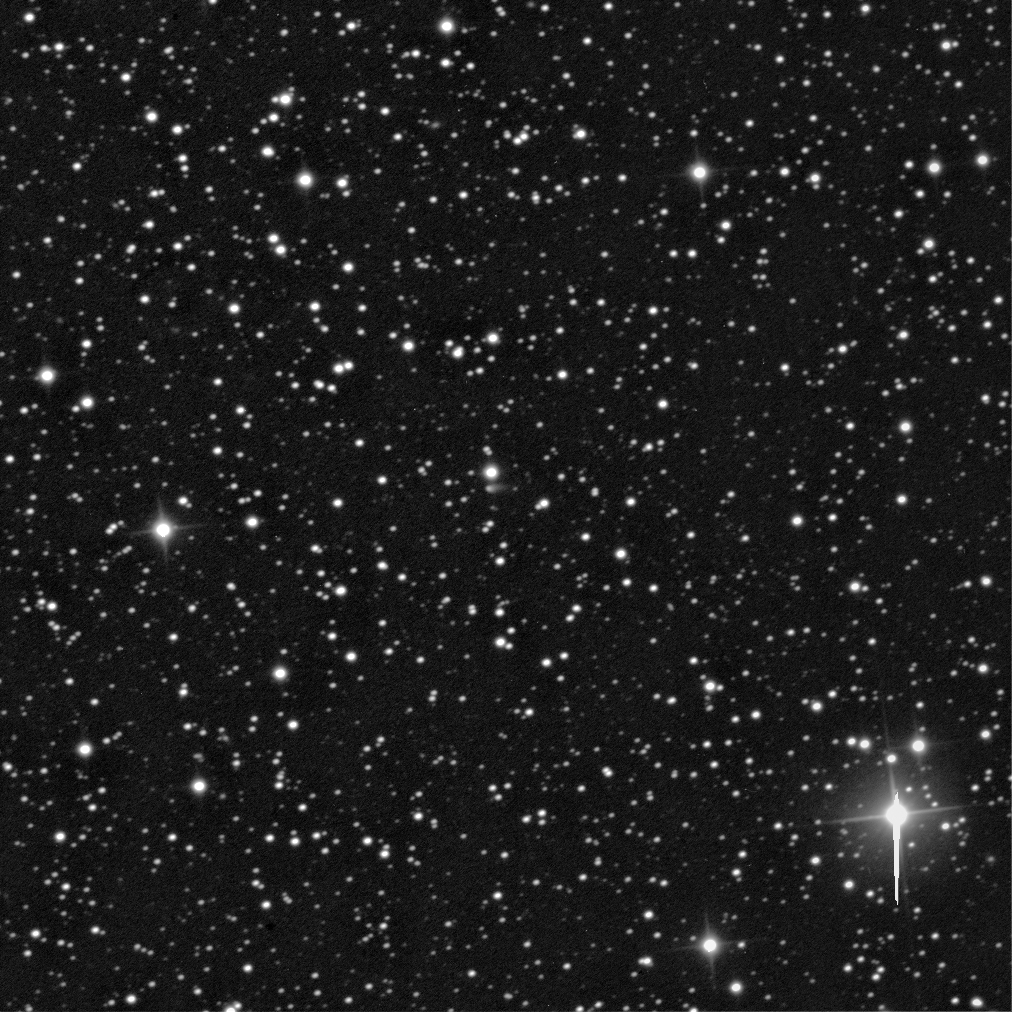
By October 1013 the comet was becoming quite bright and beginning to grow a long tail.
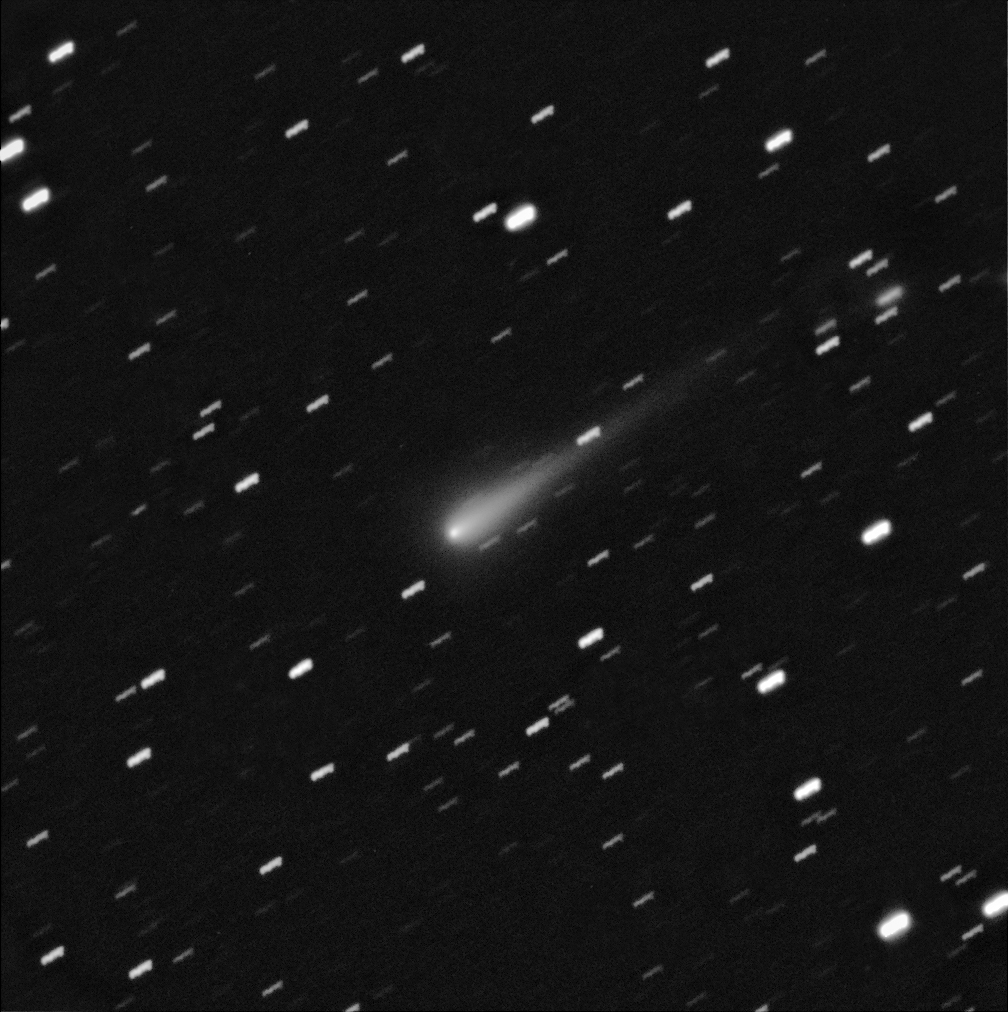
During November 1013 the comet underwent a surge in brightness and became visible to the naked eye.
